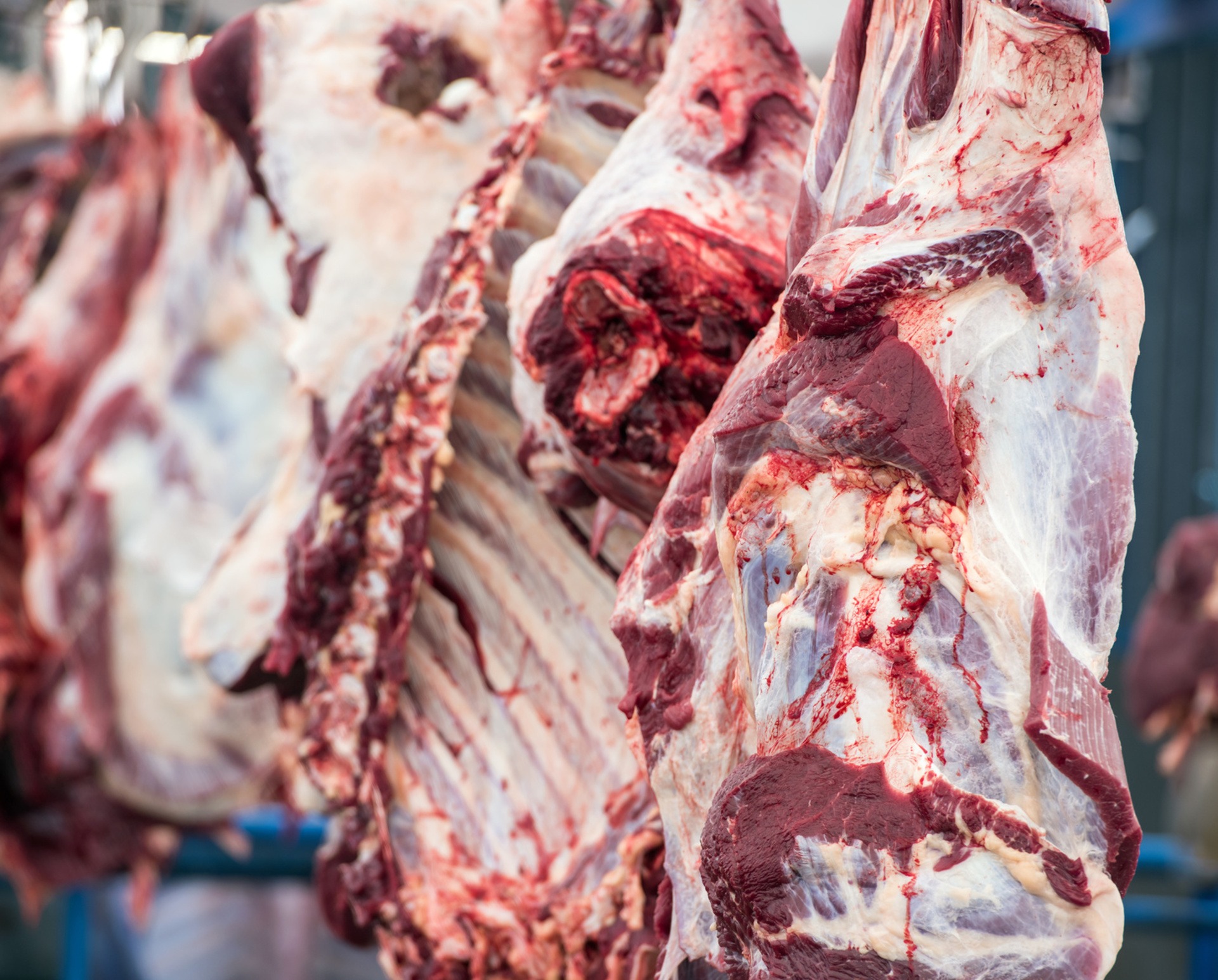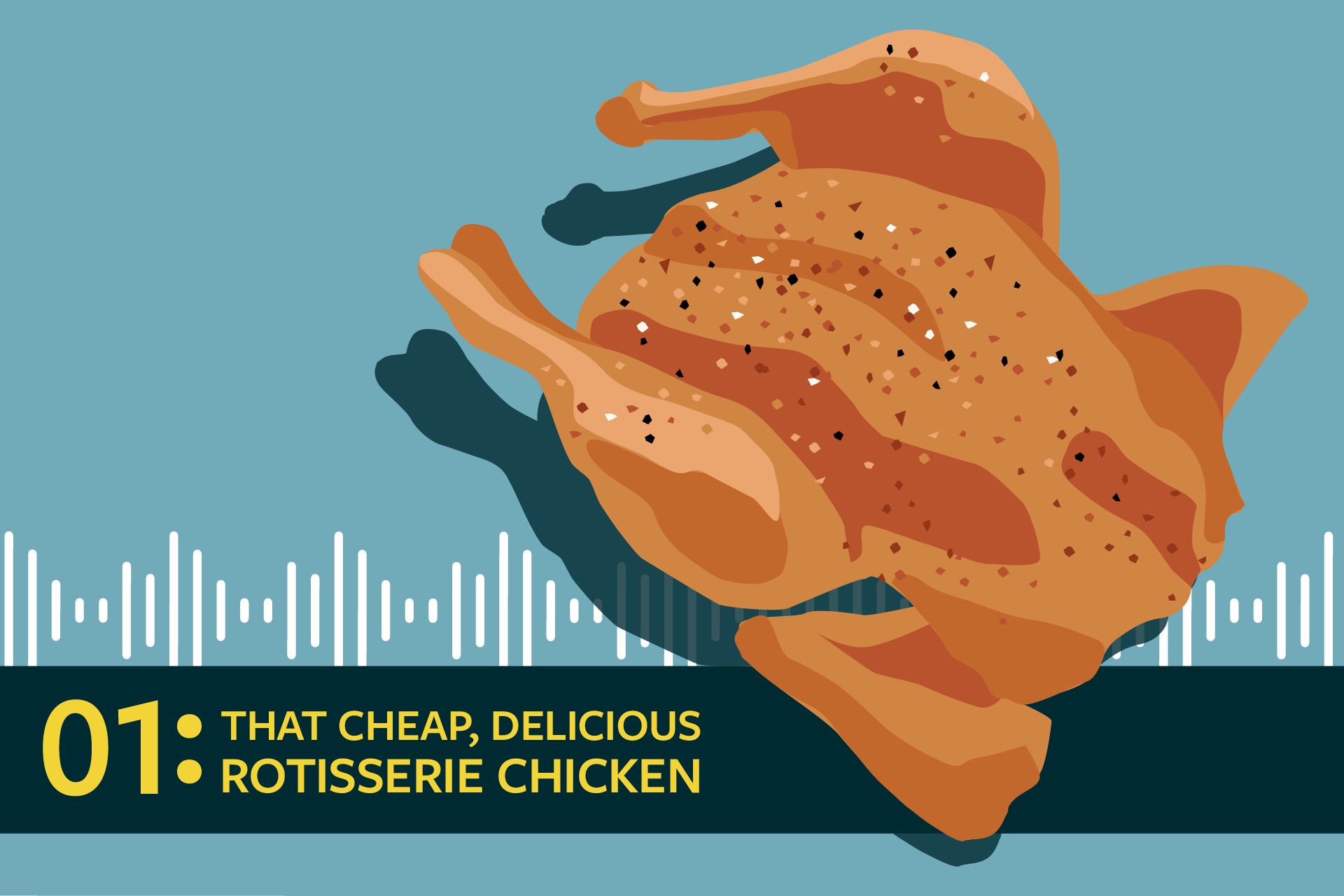What do faster line speeds in slaughterhouses mean for animals, workers and food safety?
In the industrial meat system, animals are treated like any other product that comes out of a factory. From the moment animals arrive at a slaughterhouse, everything that happens to them — stunning, slaughtering, cleaning, breakdown and packaging — is on a tight, consistent schedule, much like an assembly line for other products. As meat production has increased over the years, the speed of those processing lines has crept faster and faster. And while that’s good for meatpacker’s profits, it’s bad news for animals, workers and consumers.
For now, most poultry plants move at a staggering rate of 140 birds per minute, just over two a second. Pork processing plants are allowed to slaughter up to 1,106 per hour. But in recent years, some plants have been granted waivers that allowed them to move even faster — up to 175 birds per minute in chicken, nearly three birds per second. In March, the Trump administration announced that they would extend this policy indefinitely until they could rewrite the rules to let all poultry and pork plants operate at higher speeds. But while the administration claims the goal is to cut “outdated administrative requirements that have slowed production and added unnecessary costs for American producers,” animal welfare advocates, workers’ unions and public health experts have all cautioned that the shift would remove vital safeguards for everyone.
Line speeds and animal welfare
Slaughterhouses have never been humane for animals, but faster line speeds mean that even the minimal safeguards to protect animals from excessive suffering don’t work as intended.
As the Humane League, an animal welfare organization working to end the abuses of the factory farm system, details, the main slaughter line in meatpacking — dubbed the evisceration line — is largely automated today. Chickens are normally shackled upside down to a conveyor belt that drags them through an electrified bath, stunning them before their throats are cut. Their carcasses are then submerged in boiling water to remove feathers. It’s a gruesome process, but speeding it up makes it worse: Hastily shackled chickens can be dragged by broken legs, miss the stun bath and have their throats cut while fully conscious, or miss the blade and be submerged in boiling water alive.
For pigs, which walk into the slaughterhouse on their own, faster line speeds mean electric prods or strikes from handlers trying to coerce them to move faster. Like chickens, pigs can also suffer from improperly performed stunning, botched slaughter and live submersion into boiling water, issues that become more frequent at higher speeds.
Line speeds and workers
There aren’t a lot of jobs in meatpacking that are easy or safe: Workers are handling frightened live animals, moving heavy carcasses and equipment and using sharp tools. As you can imagine, these tasks don’t get easier or safer when you do them faster. But that’s only part of the problem when it comes to increased line speeds. Because of the assembly-line nature of modern meat processing, workers are also performing a single task thousands of times in a single eight-hour shift, often for months or even years at a time. Speeding up the production line multiplies the number of times workers are performing those motions, and that puts them at serious risk of developing carpal tunnel syndrome, tendonitis and more serious forms of chronic musculoskeletal injury.
The meat industry has argued that because the most hands-on parts of meatpacking (like preparing different cuts out of the carcass) technically don’t happen on the automated evisceration line, increasing line speeds doesn’t increase chronic injury rates. As proof, they’ve pointed to recent U.S. Department of Agriculture (USDA) studies on poultry and pork plants running at higher speeds that didn’t find a direct association between evisceration line speeds and higher worker injury rates.
81%
of poultry workers are at high risk of developing musculoskeletal disorders.
But as journalist Kenny Torella explained in Vox, those studies actually do implicitly confirm that greater line speeds equal greater danger: While evisceration speeds didn’t show a direct effect on worker injuries, workers’ piece rate (the number of pieces of meat they produce per minute) did. As plants raise their evisceration rates, their other processing lines will have to keep up somehow. And while some processors might hire more employees to keep piece rates constant, most won’t unless they’re required by law to do so. Predicting the outcome doesn’t require complicated math: Increased line speeds will mean increased piece rates, and with them, increased worker injuries.
Those chronic injury rates are already high, with those USDA studies finding 81 percent of poultry workers and 46 percent of pork-plant workers at a high risk of developing musculoskeletal disorders, and more than 40 percent of workers in both studies reporting pain stemming from the repetitive nature of their jobs. And that’s just the data for musculoskeletal conditions: Other accidents, like cuts, gashes and amputations were not included. Those injuries are already disproportionately common in meatpacking compared to other industries, and increased production speed would almost certainly make those problems worse.
All these reports are likely undercounts, with many workers brushing injuries aside for fear of firing or other retaliation. That pressure to remain silent about bad working conditions is particularly pronounced for the undocumented workers who make up an estimated 30 to 50 percent of the meatpacking industry. With fears of mass deportations or other actions at a new high under Trump, meatpackers have even more leeway than usual when it comes to shutting down workers’ complaints.
Beyond chronic injuries and accidents, there’s also the quality-of-life angle. Line workers already have miserable, repetitive jobs. They’re often discouraged from taking bathroom breaks, and, in some cases, have reported being forced to wear diapers so they don’t need to step away from the line. As production speeds up, more time off the line means more wasted profits; it seems inevitable that employees will face even more pressure to stay on the line.
Line speeds and food safety
Raw meat can carry and transmit a number of dangerous bacteria. Contamination risks multiply if it isn’t handled and inspected carefully during every step of slaughter and processing. Those bacteria can end up on meat through poor hygiene practices anywhere in a meatpacking plant, but the most common points of contamination are the slaughter and evisceration processes. If an animal’s guts are punctured or torn as they’re removed, feces and any bacteria they contain are transferred with them. E.coli, salmonella, campylobacter and several other disease-causing bacteria can be spread in this way.
Intuitively, faster line speeds make this kind of accident more likely. They also make it less likely to get noticed: USDA inspectors are required in meat plants, and they already struggle to keep up with the speed of the slaughter lines. This gives them inadequate time to make sure carcasses are clean and free of contaminants. That doesn’t just include feces — hair, nails, and other animal parts can also end up in finished meat products when inspectors can’t do their jobs.
Inspectors have sounded the alarm in the past, with whistleblowers announcing on NBC in 2019 that between higher line speeds and reductions in the number of inspectors, they didn’t feel that they could trust the safety of U.S. pork anymore.
Nevertheless, meatpackers claim nothing has gone wrong, citing a lack of evidence directly linking foodborne illness outbreaks to the pork and poultry plants that have been granted waivers to operate faster. But this is a shaky statement. Foodborne illnesses often go unreported, and even when they are reported, it’s hard to trace them back to the source given the opacity of most supply chains.
When it comes to food safety, common sense and an abundance of caution should triumph over processing more carcasses per minute. Given the second Trump administration’s staffing reductions across the patchwork of agencies that coordinate the country’s food safety efforts, it’s an especially bad time to be further lowering food-safety standards at meatpacking plants.
Beyond line speeds: Salmonella in poultry
When it comes to salmonella in poultry, line speeds aren’t the only concern. Salmonella spreads freely in the cramped and unsanitary environment of a standard poultry barn, meaning that birds enter the slaughter line with salmonella bacteria already on their skin and feathers; this adds yet another transmission vector beyond the one presented by ruptured guts. Industry sources have trumpeted a study showing line speeds had little impact on salmonella prevalence, presenting that as evidence that faster line speeds are a good thing. But that’s sort of like saying it didn’t rain because the ocean didn’t get wet: Salmonella is common enough in meatpacking plants that line speeds had no impact on its ubiquity. That’s not exactly a point in the industry’s favor.
Still, meat processors can take several measures to cut back on salmonella in meatpacking plants; for example, steps like dry chilling can effectively reduce salmonella below safe levels or eliminate it entirely. These steps are already standard in the EU and several other countries, along with on-farm salmonella reductions that make raw poultry far safer. Proposed Biden-era rules would have set limits on salmonella bacteria and deemed some strains of the bacteria adulterants, a designation that would make meat contaminated with them illegal to sell. Much of the raw poultry that’s currently deemed safe would have been rendered ineligible for sale as a result, forcing producers to adopt those extra steps.
300,000
people per year are infected with salmonella from chicken or turkey.
But this is another area where meatpackers have gotten exactly what they wanted from the new administration: The USDA announced in March that they were withdrawing those salmonella rules, citing the industry’s complaints that the necessary steps would be burdensome, costly and slow production.
We are left with the status quo, where consumers bear the sole responsibility to avoid illness by cooking contaminated chicken to 165 F. It’s hardly a foolproof solution: Between cooking mishaps and accidental cross-contamination in the kitchen, chicken and turkey sicken about 300,000 people with salmonella infections in the U.S. every year, resulting in an average 100 deaths annually. Small changes to meatpackers’ processes could dramatically reduce this burden — but the industry has again been given clearance to choose its own bottom line over public safety.
Get the latest food news from FoodPrint.
By subscribing to communications from FoodPrint, you are agreeing to receive emails from us. We promise not to email you too often or sell your information.
Top photo by Ricardo Canino/Adobe Stock.
More Reading
300 million male chicks are killed every year. Can in-ovo sexing change that?
September 30, 2025
When "Made in America" isn't really: Country-of-origin labeling for beef
May 8, 2025
This vegan tiramisu will bring you joy
March 11, 2025
Finding a pet food that aligns with your values
February 11, 2025
The environmental benefits — and limitations — of hunting as a food source
January 6, 2025
The USDA updated label guidelines to increase transparency — is it enough?
September 12, 2024
How can ecofeminism help us envision the future of food?
July 18, 2024
Switching from beef to chicken isn't the sustainability flex you think it is
June 12, 2024
Is it too cruel to eat veal, foie gras and octopus?
May 14, 2024


